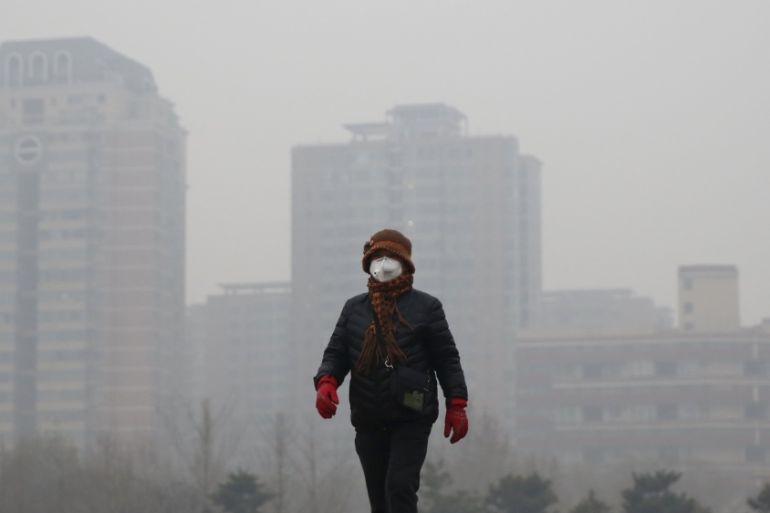Tough decisions await China’s pollution battle
Some coal-fired power stations face closure as country slowly begins to wean itself off its addiction to fossil fuels.

Beijing – China is in a unique position: It is a heavy polluter but is also probably spending more on efforts to combat pollution than any other country.
And it should, according to environmental groups.
Keep reading
list of 4 itemsTurtles swimming to extinction in Malaysia as male hatchlings feel heat
Could shipping containers be the answer to Ghana’s housing crisis?
Thousands protest against over-tourism in Spain’s Canary Islands
At the UN-sponsored climate summit in Paris, China has been trying to rehabilitate its “bad boy” environmental image, stressing its desire to make decisions that are “positive, balanced, and pragmatic”.
Throughout the summit, as it always does on these occasions, China’s ministers have been trying to convince delegates that it is still just a “developing” nation, even though it is now the world’s second-largest economy.
|
|
The reason is simple. If China is classed as an “industrialised” nation, it would have to make a big donation to the fund that is now being set up to help countries suffering the worst effects of climate change.
So, for now at least, China is clinging to that developing-nation status. And that’s one of the reasons why there has been friction in Paris.
The timing of the this summit could hardly have been worse. Beijing authorities were forced to issue their first red alert due to the smog levels earlier this month.
For much of the past two weeks, the city has been blanketed by a poisonous pall that has closed schools and disrupted life for the millions that live there.
But China’s government has been unusually open about the problem and has been encouraging public awareness.
The emergency measures so far have been stopgap. These included traffic restrictions that, for three days, halved the number of cars on Beijing’s roads and shut down factories temporarily.
It is doubted that this led to the respite in conditions on December 9. The smog only began to clear after the arrival of strong northerly winds.
China’s government can control most things but it can’t control the weather.
INTERACTIVE: COP 21, towards a new climate agreement
Meanwhile, China’s government will start closing some – but not all – of its coal-fired power stations in the next three years as it slowly begins to wean itself off its addiction to fossil fuels.
It has pledged that its greenhouse gas-emissions will peak by 2030. This is significant because China is the biggest emitter of such gases.
![China's government has been unusually open about the problem and has been encouraging public awareness [Al Jazeera]](/wp-content/uploads/2015/12/eba9de1d362941638b244743773c0e36_18.jpeg)
And it is striving to ensure that at least 20 percent of its energy needs will come from renewables within the next 15 years, if not sooner.
The impact of green technology is already apparent in the far west of the country where, in one area, there are wind turbines for as far as the eye can see.
In the long-term, the government knows it is going to have to make some very painful decisions including shutting down thousands of factories that are contributing to pollution in a big way.
But that action would risk mass unemployment and what the authorities fear most: social instability.
A visit to Sichuan province – a former steel town on the outskirts of Chengdu where a mill closed nine months ago after being labelled a heavy polluter – reveals that 16,000 workers lost their jobs.
This could be what other power plants end up with. But, in a way, that strategy chimes with what China is trying to do with its economy right now: transition away from the heavy industries that once powered its economy.
|
|